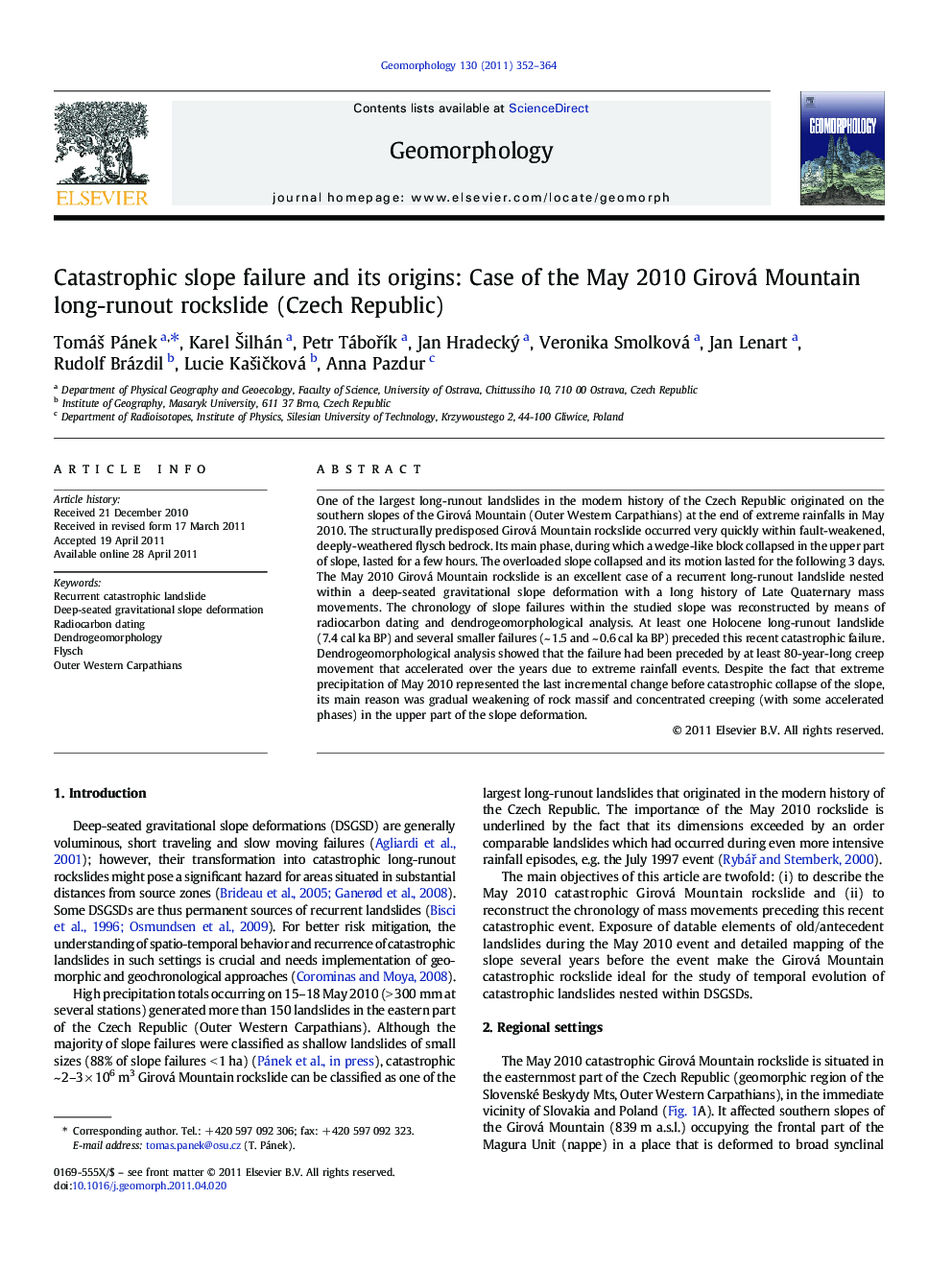| کد مقاله | کد نشریه | سال انتشار | مقاله انگلیسی | نسخه تمام متن |
|---|---|---|---|---|
| 6433019 | 1635500 | 2011 | 13 صفحه PDF | دانلود رایگان |

One of the largest long-runout landslides in the modern history of the Czech Republic originated on the southern slopes of the Girová Mountain (Outer Western Carpathians) at the end of extreme rainfalls in May 2010. The structurally predisposed Girová Mountain rockslide occurred very quickly within fault-weakened, deeply-weathered flysch bedrock. Its main phase, during which a wedge-like block collapsed in the upper part of slope, lasted for a few hours. The overloaded slope collapsed and its motion lasted for the following 3 days. The May 2010 Girová Mountain rockslide is an excellent case of a recurrent long-runout landslide nested within a deep-seated gravitational slope deformation with a long history of Late Quaternary mass movements. The chronology of slope failures within the studied slope was reconstructed by means of radiocarbon dating and dendrogeomorphological analysis. At least one Holocene long-runout landslide (7.4 cal ka BP) and several smaller failures (~ 1.5 and ~ 0.6 cal ka BP) preceded this recent catastrophic failure. Dendrogeomorphological analysis showed that the failure had been preceded by at least 80-year-long creep movement that accelerated over the years due to extreme rainfall events. Despite the fact that extreme precipitation of May 2010 represented the last incremental change before catastrophic collapse of the slope, its main reason was gradual weakening of rock massif and concentrated creeping (with some accelerated phases) in the upper part of the slope deformation.
⺠We describe the largest long-runout landslide in the modern history of Czechia. ⺠This rainfall-induced catastrophic rockslide originated along faults. ⺠Flysch rock massif affected by a DSGSD has undergone long-term gradual weakening. ⺠The landslide dating strategy was based on 14C dating and dendrogeomorphology. ⺠The landslide was preceded by several Holocene mass movements.
Journal: Geomorphology - Volume 130, Issues 3â4, 15 July 2011, Pages 352-364